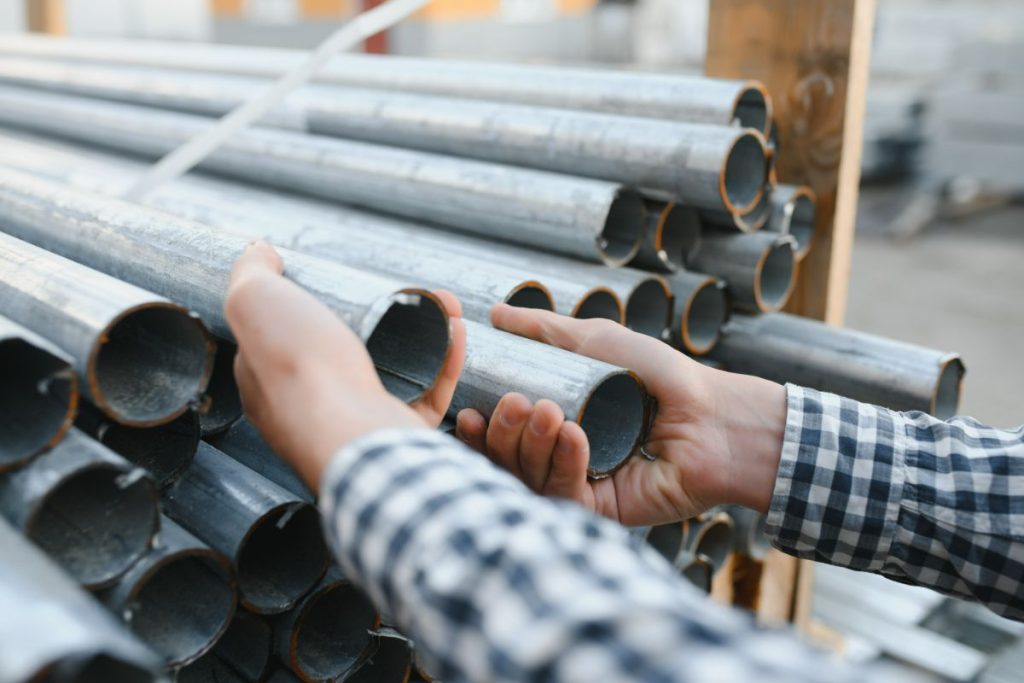Overview
- This article compares stainless steel and galvanized iron pipes, elaborating on their distinct properties and uses.
- Stainless steel is an alloy with variable compositions influencing its mechanical properties, whereas galvanized iron features a protective zinc coating for enhanced corrosion resistance.
Choosing between stainless steel and galvanized iron pipes is pivotal in selecting the right piping materials for construction, plumbing, or industrial applications. It affects the overall durability of your project. While both steel products are reliable, it’s still necessary to understand their own unique set of properties that contribute to their advantage.
In this article, we discuss the stainless steel vs galvanized iron pipes. But, in looking into their distinct characteristics, we must first dive into the basics of it all—their definition.
What is Stainless Steel?
Stainless steel is composed of numerous elements. One of which is chromium. It is made by adding this very chemical to molten steel.
There are more than a hundred grades for this material. However, it is often categorized into five distinct families. These are austenitic, ferritic, martensitic, duplex, and semi-austenitic steels. Austenitic stainless steel is the most common type used for housewares, construction, and more.
Since this material is often a combination of alloying elements, each chemical changes its mechanical properties. This enhances certain qualities of the material. Additional elements you can add to stainless steel are, but not limited to, nickel, nickel, molybdenum, titanium, niobium, and manganese.
What is Galvanized Steel?
Galvanized steel consists of a base metal and a protective layer. The base metal should be ferrous metals. This means they must contain iron properties. A simple test to know which metal is ferrous and which is non-ferrous is through magnetism. If a magnet sticks to the metal, it is ferrous.
The protective layer of galvanized steel products is usually a coat of zinc. This is what makes them corrosion-resistant. Zinc is a natural and abundant element that was first used in construction in 79 AD. When used, it can create protection from basic carbonates, oxides, or hydrated sulfates. The most popular way to add this chemical to metal is through the process called galvanization.
What are the Differences between Stainless Steel and Galvanized Iron Pipes?
The main difference between these two steels is where they get their qualities. While stainless steel gets its traits from changing its mechanical properties by adding other elements, galvanized steel uses zinc coatings to enhance its characteristics. But there are still many ways they are distinct from each other, here are three other attributes you should know about.
Corrosion Resistance
In the context of pipes, corrosion resistance is important to consider. This is especially useful when you are using it in high-moisture applications. Whether it is plumbing or infrastructures near or over the water, using the right pipes for the job is crucial.
Both steel is actually corrosion resistant. The only difference is that galvanized iron pipes are readily anti-rust. They are made standard because of zinc coating. This protective layer reduces the rate of rust from forming or spreading.
Moreover, it acts as a sacrificial layer when rust does happen. This means that rust breaks down the zinc first before the very metal material. The galvanization process makes GI pipes durable solutions for infrastructure.
On the other hand, stainless steel can be made differently from one another, meaning not all stainless steel can resist oxidation.
Application or Use
Stainless steel and galvanized iron pipes are used for an array of purposes. Galvanized steel is often used for vehicle bodies, bicycles, water pipes, and more. It is also the most ideal material for steel frames in construction. You can often see them in skyscrapers, roofing, balconies, and staircases.
Using stainless steel, on the other hand, entirely depends on its mechanical properties. This means you should look through each category or family to find the best option for you.
Cost & Malleability
Compared to stainless steel pipes, galvanized iron pipes are more affordable and customizable. Primarily, the cost is what makes the latter piping solution more attractive. In addition to that, customizing them to your needs would also be less of a hassle.
Galvanized iron pipes are easily formable but this still depends on the steel grade used. They can easily be bent to concise direction, and cleaner cuts, and are flexible to shape. Moreover, GI pipes are readily used. This means that there are no additional steps between the purchase and installation of it. They are made ready to use to make projects more convenient.
Key Takeaway
Understanding the stainless steel vs galvanized iron pipes discussion is important. It can help you make informed decisions about the integrity of your project. Choosing the right steel pipe for your application allows you to create reliable structures. While it first starts with research, it also begins partnering with steel pipe experts in the industry.
With Supreme Steel Pipe Corp., we ensure that we give our customers the highest-quality materials for their build. Whether it is used for infrastructure or irrigation, our versatile steel pipes are developed with utmost dedication to improve durability and strength. Contact us today and get your hands on our top-rate piping solutions for your project!
